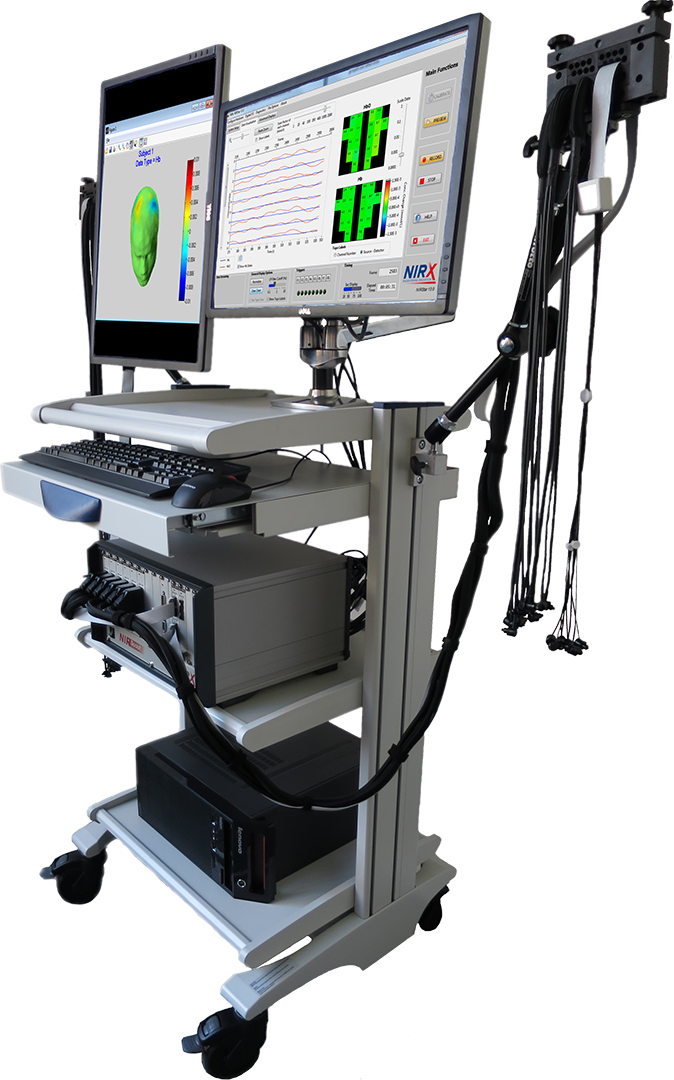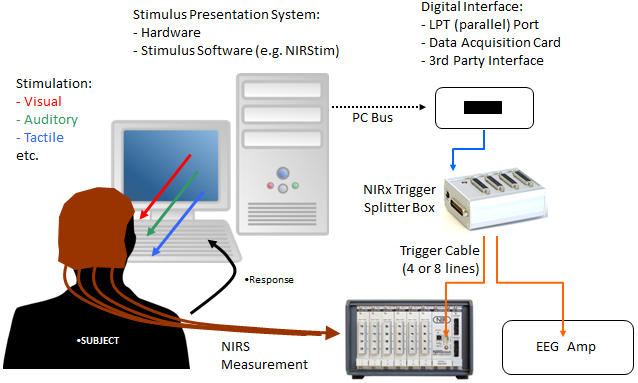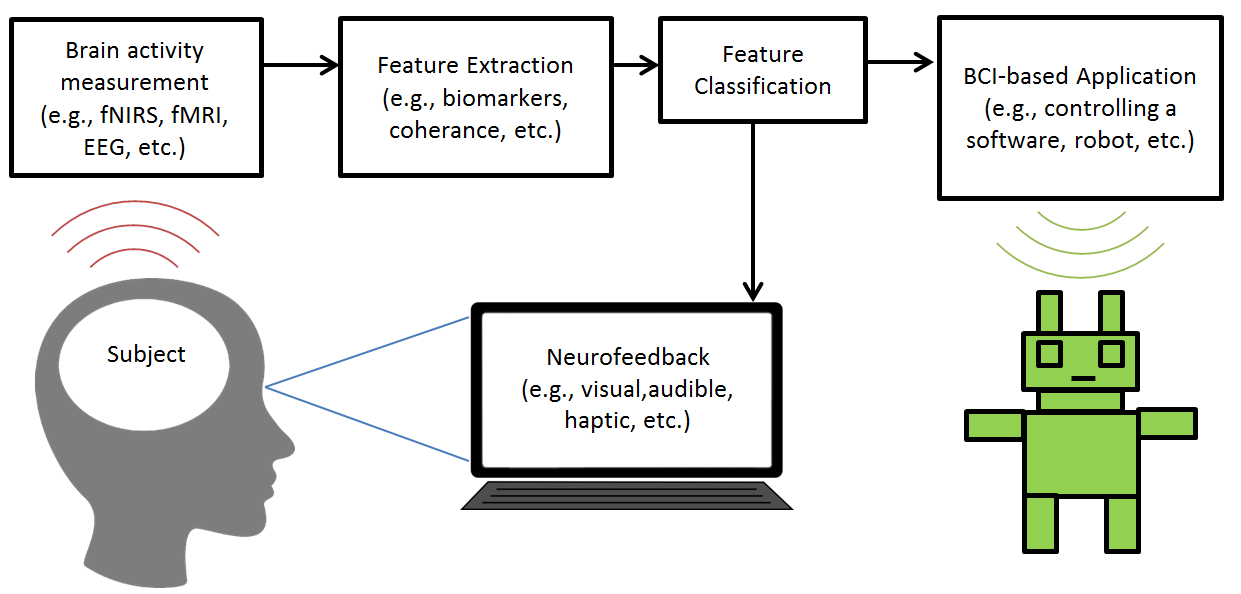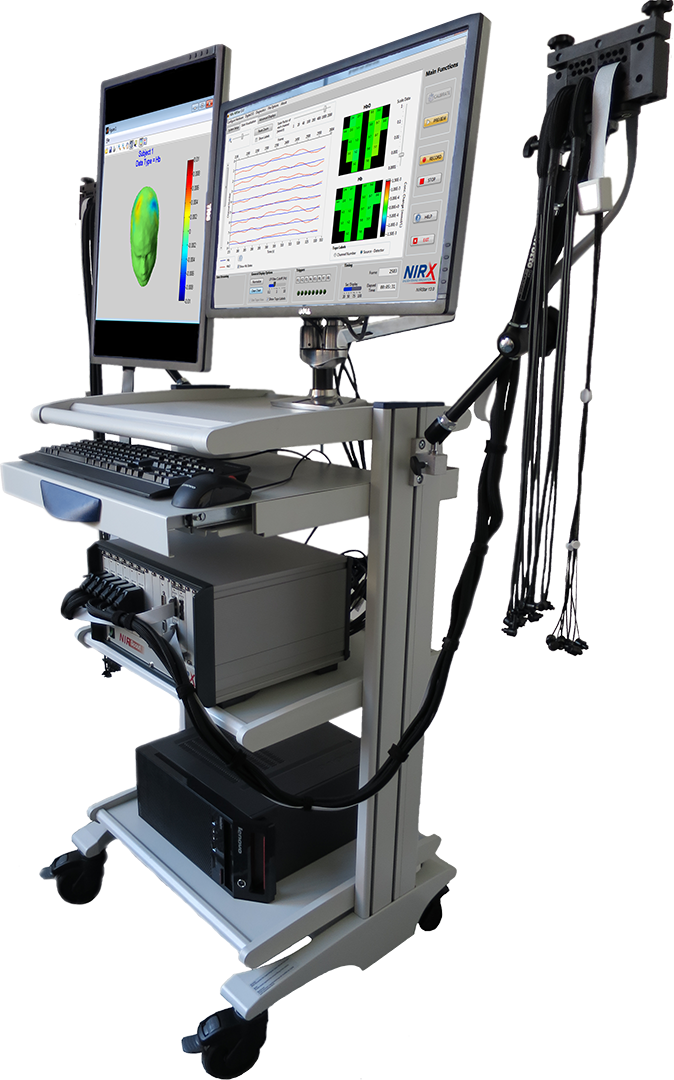With NIRScout, you can measure fNIRS from anywhere on the head concurrently with (nearly) any other modality. It is our most versatile solution for fNIRS researchers.
Setup fNIRS Fast
NIRx uses the NIRScap system for an incredibly fast setup (see video of <60-second setup).
Multi-Modal Integration
NIRScout is ideal for multi-modal measurements with EEG, fMRI, eye-tracking, cochlear implants, TMS, tDCS, EMG, pulse oximetry, and other modalities for concurrent measurements.
Application-Specific Probes & Headgear
Specialized probes and headgear available for comfortable
measurements on any subject, for any application.
User-Friendly, Modular, Scientifically Supported
The NIRScout is a user-friendly, modular, and robust functional near-infrared spectroscopy (fNIRS) platform which measures hemodynamic responses to neuroactivation via oxy-, deoxy-, and total hemoglobin changes in the cerebral cortex. The NIRScout platform includes a host of ready-to-implement upgrades and modules to meet the needs of a broad range of cognitive neuroscience applications.
fNIRS that is Easy to Learn and Use
Connection to the NIRScout systems is quick and easy, with 'thumbscrew-style' probe connectors (shown right).
Our Most Versatile NIRS Solution
Optimize your NIRScout system with the precise configuration for your research.
Source numbers:
from 8-64 (single) or 16-128 (tandem)
Source types:
Laser (2- or 4-wavelength) or LED (2-wavelength)
Detector numbers:
from 4-32 (single) or 8-64 (tandem)
Detector types:
SiPD (active or fiber optic) APD (fiber optic)
Chassis sizes:
Standard, Extended, Extended Plus
NIRS Researchers Supporting NIRS Researchers
NIRx has been actively involved, as a company or through our internal researchers, in advancing NIRS hardware, software, and methodology for the past 30 years.
We dedicate 100% of our company to selling, supporting, and advancing NIRS.
We offer the highest-level scientific support to our customers, ensuring that the nuances of fNIRS are fully appreciated.
You can learn more about NIRx support on our support page.
NIRScout - The Ideal NIRS System for Concurrent NIRS/EEG
Freely-configurable probe arrays easily integrate with EEG and tDCS within a single NIRx NIRScap.
Right: NIRScap integration with passive EEG electrodes and NIRScout NIRS 'optodes' (i.e., NIRS source and detector probes).
NIRx can easily integrate with nearly any EEG electrode for concurrent NIRS/EEG measurements. Integration with passive unshielded, passive shielded, active, and sponge electrode solutions all exist for NIRScout and NIRScap.
Example of NIRScout + EEG Data Integration
Data integration with NIRScout and EEG systems is easy with event synchronization. This may be done at the start and end of experiments, during 'trigger' events, or arbitrarily during the experiment.
Example Right: The event trigger generated by the presentation computer is sent to the digital interface (trigger splitter), where the events are then sent to the NIRx trigger splitter box, splitting each trigger and maintaining the proper voltage, sending the even signal to the NIRS and EEG systems. This trigger-splitting method may be used from different input devices (e.g., TMS, eye-tracking, etc.), and sent to multiple recording devices.
NIRx fNIRS Application Overview - NIRScout
The NIRScout is excellent for multi-subject (hyperscanning measurements), especially for social and developmental applications. Movement-related noise is minimized by the innovative NIRScap and probe design.
BCI/Neurofeedback
Child measurements
Cochlear Implant research
Cognitive Disorders
Developmental Disorders & Psychology
Hyperscanning (multi-subject measurements)
Movement/Balance (with longer probe cables)
Infant Monitoring
Neuropathology
Neuropsychiatry
Social Interaction
Speech/Language
Stroke and Rehabilitation research
Traumatic Brain Injury research
Visual Impairment/Stimulation
Real-Time Processing of fNIRS Data
Many NIRScout end-users process their NIRScout data in real-time for brain-computer interface (BCI) and neurofeedback applications.
The diagram below is an abstraction of both neurofeedback and BCI data flow.
1) Physiological data are collected from a subject (e.g., fNIRS, EEG, fMRI, EKG, etc.)
2) Feature extraction and classification are used to characterize the data (with multi-modal considerations, if available and relevant)
3) The subject data is either used for:
a) BCI-based application - controlling a software program, robot, etc.
b) Neurofeedback, influencing the subject, thereby altering the physiological signals (ideally). Feedback are typically visual, audible, or haptic.
Other NIRScout Advantages
Capable of short-distance and multi-distance (tomography, 3D depth) measurements
Illumination pattern (source firing sequence) fully-customizable, which increases sampling rate
Can measure up to 8 subjects from a single system
Up to 255 triggers input, and up to 255 triggers output
Tandem operation: two systems used to measure data from a single subject, connected to a single recording computer
The NIRScout Extended and Extended Plus NIRS System
Technical Specifications
| Maximum Sources | 64 (up to 128 in tandem config.) |
| Maximum Detectors | 32 (up to 64 in tandem config.) |
| Maximum Data Channel Stream | 2048 (up to 4096 in tandem config.) |
| Sampling Rate | 2.5 - 100 Hz |
| Source Illumination Types | Hybrid Choice: LED & Laser Sources |
| Source Wavelengths | LED: 760nm & 850nm; Laser: 785, 808, 830, & 850nm |
| Key Measurement Features | Time multiplexing and 10e9 dynamic gain state switching |
| Detector Dynamic Range & Sensitivity | 90 dBopt; SiPD: < 1 pW or APD: 0.5PW |
| Detection Sensor | Silicon Photodiode (SiPD) or Avalanche Photodiode (APD) |
| Trigger/Event Connection | Extended: 8-bit TTL Input and Output; Standard: 4-bit TTL Input |
| Maximum Functional Resolution | 7.5mm (with 7.5mm source-detector spacing) |
| Included Data Acquisition Software | NIRStar |
| Topography Software | Open format: nirsLAB, Homer2, MATLAB, etc. |
| Headgear | NIRScaps: freely-configurable, measures whole head, fits all age ranges, multi-modal |
| BCI/Neurofeedback | Optional module for NIRStar |
| Multi-modal Compatibility | Built-in: EEG, tDCS, eye-tracking, motion-tracking Requiring module: fMRI, TMS |
| Hyperscanning Configuration | Up to 4 separate bi-lateral 16-source/8-detector arrays for 4 subjects |
| Multi-distance/Short-distance Probe Arrays | Yes |
| 3D Depth-discrimination | Yes |
| Included Accessories | NIRScaps, System carrying case, Strain-relief Arms, Trigger cable, Instrument PC |
| Optional Accessories | Computer cart, Active Trigger Splitter, fMRI/TMS Compatibility, Flat and Blunt-tipped Probes, Animal NIRS Module, BCI/neurofeedback |
| Temperature Range | 10 - 40C (operating), -15 - 70C (storage) |
| Spectroscopic Technique, Phase Type | Continuous Wave, Single Phase |
| Humidity | 20% - 80% Relative, Non-condensing |
| Power Supply Voltage and Consumption | 90 to 250 VAC (50Hz - 60Hz); 175W Max |
| Dimensions (WxHxL), Net Weight | Standard: 260mm x 170mm x 330mm, 10kg Extended: 340mm x 170mm x 370mm, 16kg |
Click below to learn more on NIRS
About NIRS and NIRx
- fNIRS and NIRx Overview
- NIRx NIRS Publication Sample
- NIRx Newsletters
- NIRx Webinars
- fNIRS Analysis
Applications
- fMRI-concurrent fNIRS
- EEG-concurrent fNIRS
- TMS-concurrent fNIRS
- Customized Real-time Analysis in NIRS: BCI / Neurofeedback
- Combining eye-tracking with fNIRS
- Using NIRS to conduct child and infant measurements
Products
- NIRScout NIRS Imaging System for Multi-Modal Integration
- NIRSport Portable NIRS Imaging System for Multi-Modal Integration
- NIRS Caps & NIRS Optodes (Probes)
- NIRS software
Downloads
